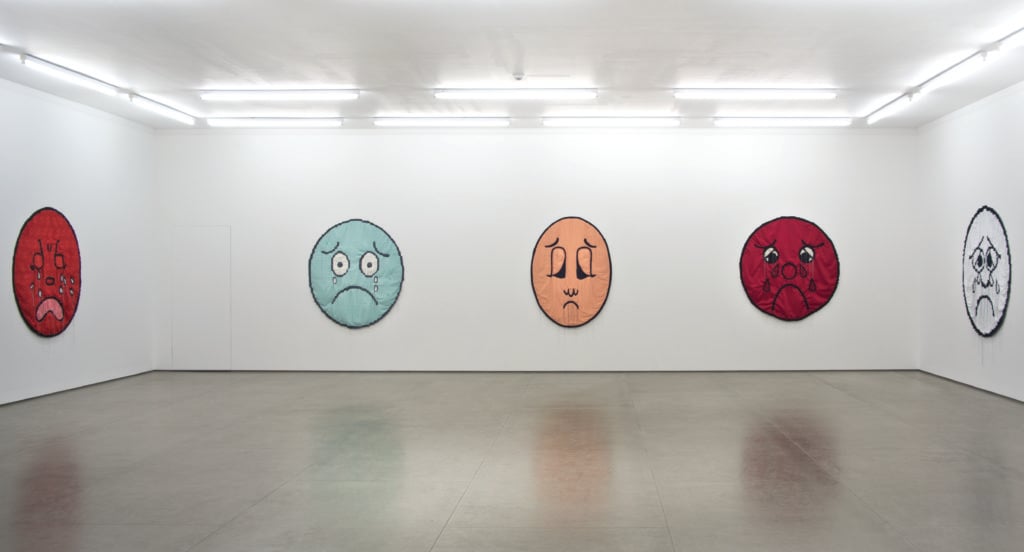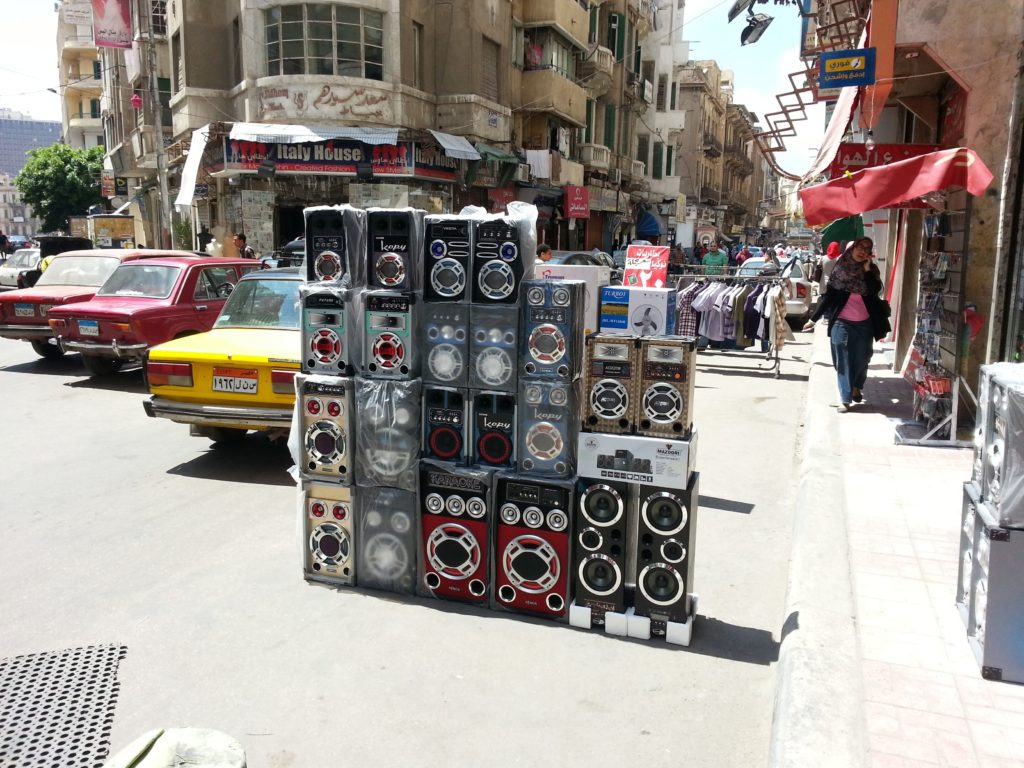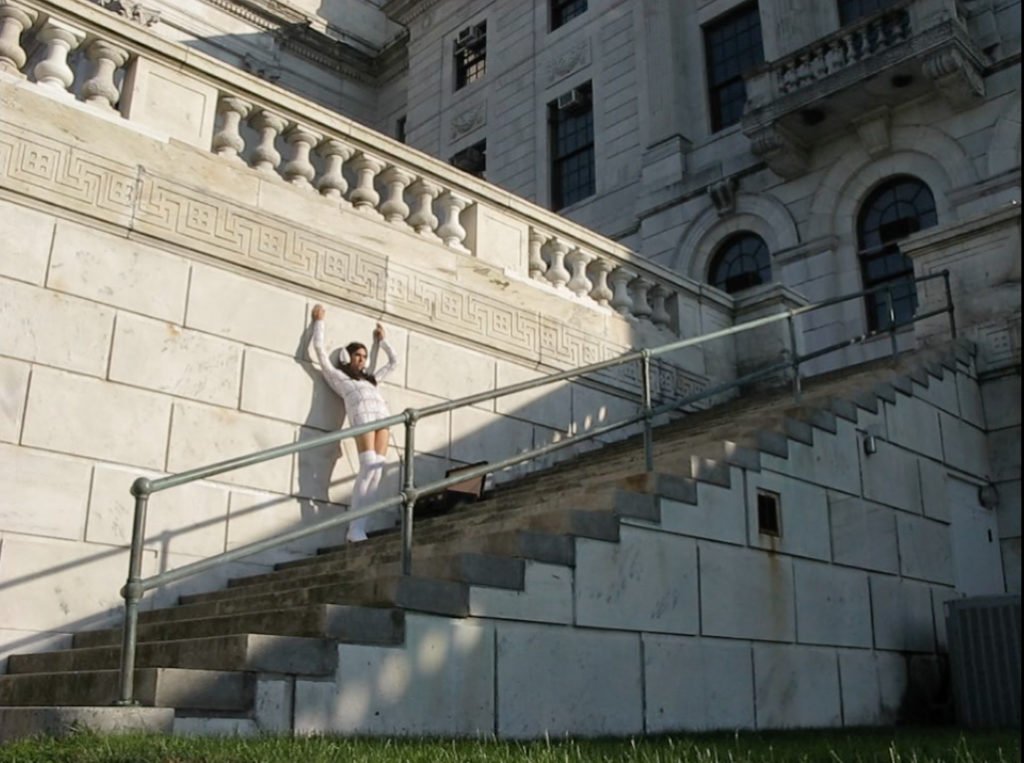Biennials aren’t usually a barrel of laughs. But the collective Slavs and Tatars conscripted several stand-up comedians to participate in the 33rd edition of the Ljubljana Biennial of Graphic Arts. For their curatorial debut, the collective zeroed in on works and performances that harness the subversive power of satire.
The biennial in the Slovenian capital was launched in 1955 at the height of the Cold War, wedged between the Iron Curtain and the West. The position the country had, at that time as part former Yugoslavia, meant that the biennial could bring together contemporary and historical artworks from both sides of the East-West divide.
Similarly, in their art practice, Slavs and Tatars are known for art that straddles geopolitical borders. Through their performance-lectures, publications, printed matter, and installations, the anonymous collective refuses to identify with any central ideology, place, or hemisphere. They are prominently included in Ralph Rugoff’s central exhibition for this year’s Venice Biennale, “May You Live in Interesting Times.”
For their curatorial debut “Crack Up – Crack Down,” they have brought together more than 30 international and regional artists to explore the graphic language of satire: a medium that can tease, taunt, and terrorize, but also incite laughter. Across nine venues, work by leading artists, including Turner Prize nominees Nicole Wermers and Lawrence Abu Hamdan, will be shown alongside interventions by stand-up comedians, scholars, and activists.
Ahead of the opening on Friday, the collective spoke to artnet News about the power of satire, the trend of collectives becoming curators, and why boycotting events is not the only way to protest.

Installation view of Amanda Ross-Ho’s HURTS WORST at Mary Mary, Glasgow. Photo: Jack Wrigley. Courtesy the artist and Mary Mary, Glasgow.
Your edition of the Ljubljana Biennial of Graphic Arts explores satire as a graphic language. Where exactly does the genre come into play?
That’s the thing about satire: it is quite slippery. We came into the project thinking that satire is always quite progressive, but we learned, for example, that satire is also conservative in the sense that it presupposes a norm. As Americans, satire always assumes that whatever came before was good and right, whether it’s on Saturday Night Live or Stephen Colbert. There is this liberal mindset that “before Trump everything was fine,” or the idea that, previously, “we had a functioning system.” But actually, what we know is that we have to dismantle those norms, as opposed to attacking the symptoms that accompany them.
So what do you think is the continued power of satire?
The reason we really focus on it is because satire, like graphic art, has a very democratic spirit, which painting and sculpture do not. It’s quite cheap and accessible, and that accessibility resonates with Slavs and Tatars.
Originally, satire was a popular low-man’s philosophy. What’s interesting about graphic art and this biennial overall is that they’ve been able to do what they have done because people were literally able to send their prints to the exhibition in a tube. That is how, here in Ljubljana, [work by] Rauschenberg was able meet [Russian artist Erik] Bulatov’s.
As a collective with multiple voices, can you tell me how you approached selecting the people and artists you have featured?
We really wanted to include as many non-artists as possible. Stand-up comedians and activists are in the show. There’s even a bookseller who specializes in the Global South and has anti-hegemonic archives of [Islamist] Afghan Mujahideen satire. He’s not an artist, but his thinking is just as interesting as any artist’s. We wanted to have a quite open remit in that sense.
A large part of your practice is focused on books and performance-lectures. How did you become curators?
Slavs and Tatars was never created as an “art collective,” but rather a platform. Curating is a natural progression given the editorial approach we have to our work. It’s also one of several initiatives that we’ve pursued over the past couple years, in terms of institutionalizing our collective.
We got to a certain place in our work where there were more opportunities than we could manage, so it was a choice between spending our resources on ourselves as artists or finding ways to tell stories that are not always dependent on this auteur-driven practice. Curating really grew out of that.
I’m sure your approaches toward creating visual work and curating an exhibition must have their differences.
In some sense, they’re actually similar. For us, art has to function initially on a spatial and formal aesthetic level. Then, the discourse has to be there, but it can’t be immediately visible. For [Ljubljana], there are two “G-spots” that distinguish the biennial: the graphic and the geopolitical. Historically, it had this non-alignment status in Yugoslavia, and a focus on graphics. Those two things are a little bit dated now, but the idea of a meeting point, where people from different factions meet—be it East and West, or the Warsaw Pact and NATO—is still very relevant.
When we started looking for works that were relevant to this idea of overlapping G-spots, we looked for works that were subtly discursive. That’s quite similar to the work we do, which people consider political or geopolitical, though it’s never markedly so. With this biennial, we were looking for works that had that elements of political rapport, but in a more dissimulated way.

Lawrence Abu Hamdan, The All-Hearing, (2014). Courtesy the artist.
How do you negotiate the decision-making as a collective?
We have almost a Stalinist separation of skill sets. The more editorially minded of us look for the artists and contributors, asking questions like, “What does this mean?” Those who are more visually and formally minded are consulted, because they see it with different eyes, asking questions like, “How does its meaning function as materiality?” Then, others think more spatially.
One of the big early discussions was: Do we invite an artist who has made one work that is very relevant, but whose practice we don’t find particularly interesting? We came to the conclusion that no, we don’t. We’re not curators, so if we’re not doing this often, then it’s important that the inclusion is an endorsement of the practice as much as of the piece.

Martine Gutierrez, Martine pt.I-IX (2012-2016). Courtesy the artist and Ryan Lee, New York.
Were there any surprises that came about through the act of curating?
What was really interesting for us, as artist-curators, is that, usually, we never deal with art. We have a limited amount of headspace that we’d rather spend time thinking about religiosity, faith, and ritual rather than art. Curating gave us the excuse to really invest in the prospective potential iterations of that work, to ask what it could be, and what it could mean. It’s a muscle that we don’t use as artists, and it’s quite an interesting exercise.
The idea of collective curating seems to be a trend, with Croatian curatorial collective WHW at Kunsthalle Vienna and the Indonesian artist collective ruangrupa organizing the next documenta. I’m curious about what a collective-as-curator brings to the table that a single curator doesn’t.
On social media, I saw a post that was interesting: They saw [these hires] as a way for artistic directors to be undermined. It seems counterintuitive, but they said that the boards or non-artistic sides of the museum will be able to diminish the artistic side’s power because there’s this idea that you can influence a collective more than a singular voice. It makes sense on a purely atomic level. It’s much harder to move one person with a singular vision than six people who have a more nebulous vision.
Given your new role as both curators and artists, how do you view the current controversies with institutions accepting tainted funding? Should artists boycott institutions if they are concerned about sponsors or a board member’s business links?
Holding some of these funding structures accountable is one of the few powers we have. Boycotting is definitely one option, but not the only one. When there’s undeniably disastrous effects, whether they’re arms dealers or big pharmaceuticals, I understand it. But when there’s political opinions that are not of the same ilk, it’s important to find a platform where you can actually engage with those people in a robust way, as opposed to simply saying “no means no.” I think “no” is too easy in our current climate.
“Crack Up – Crack Down,” the 33rd edition of the Ljubljana Biennial of Graphic Arts, is on view from June 7 through September 29 across various venues.







